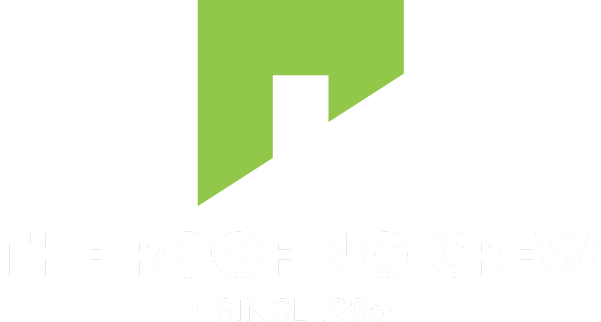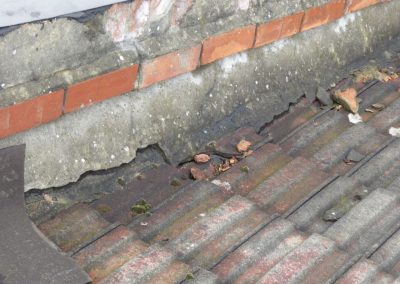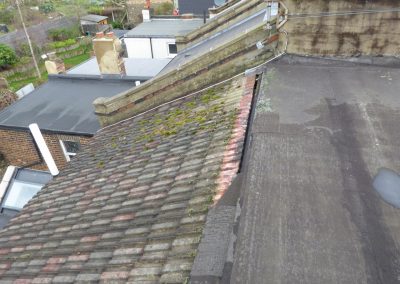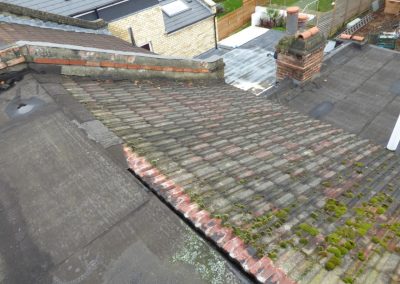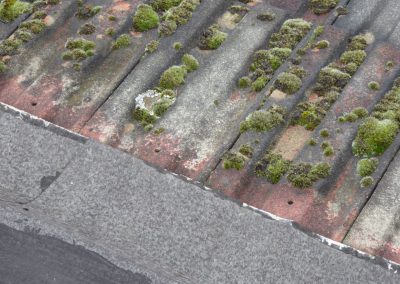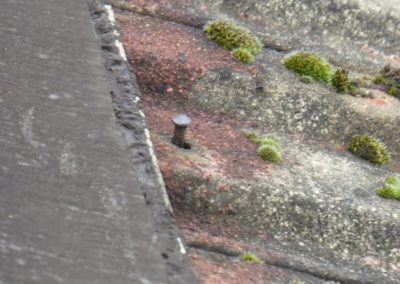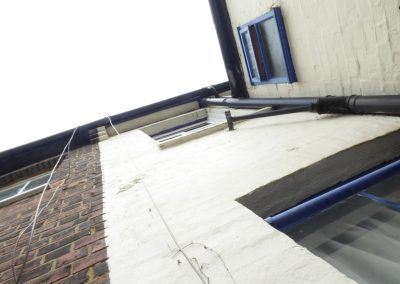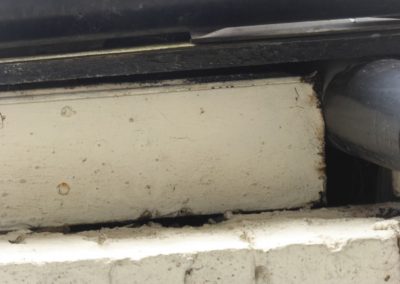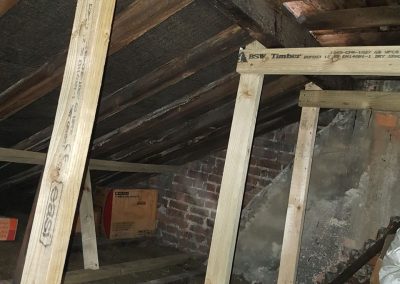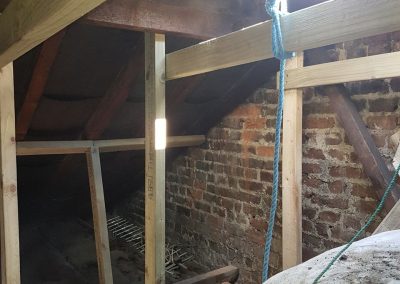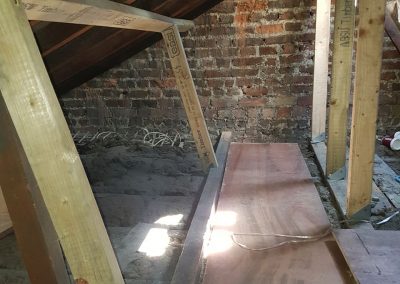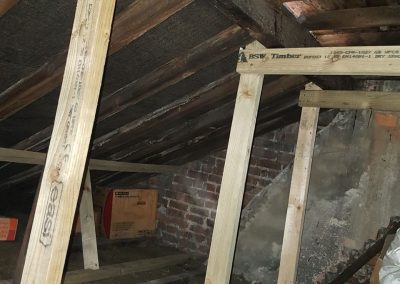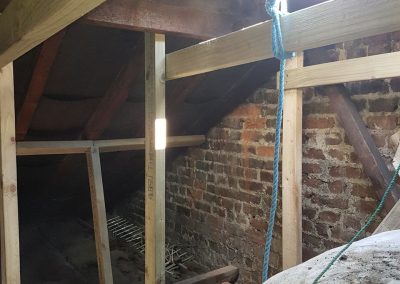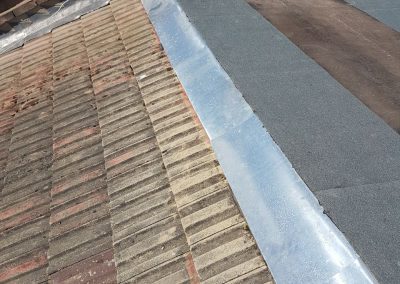Roof Spread
There is a little tip I give clients when looking at a house with a view to purchasing it. If it has a flat front with no bays, go up and stand under the front wall of the property. Look up at the gutter and if it is badly bowed and not straight, walk away. It has roof spread and to remedy it will mean a major expense, possibly even taking the roof off.
Roof spread is often caused by the roof timbers being subjected to extra weight – weight that they were not designed for. A case in point would be slates being substituted with concrete tiles, a very common occurrence nowadays.
Concrete tiles are cheap, easy to install but considerably heavier than the slate originals. If you are having this done, make sure the roof rafters are reinforced first.
To simplify, the way a roof is built it normally involves a series of rafters fixed to a wooden wall plate at their base going up to a ridge at the top.
Are you worried about the roof leaking?
Simply call The Roofing Crew for an immediate fix:
07973 429 945
Roof spread detail
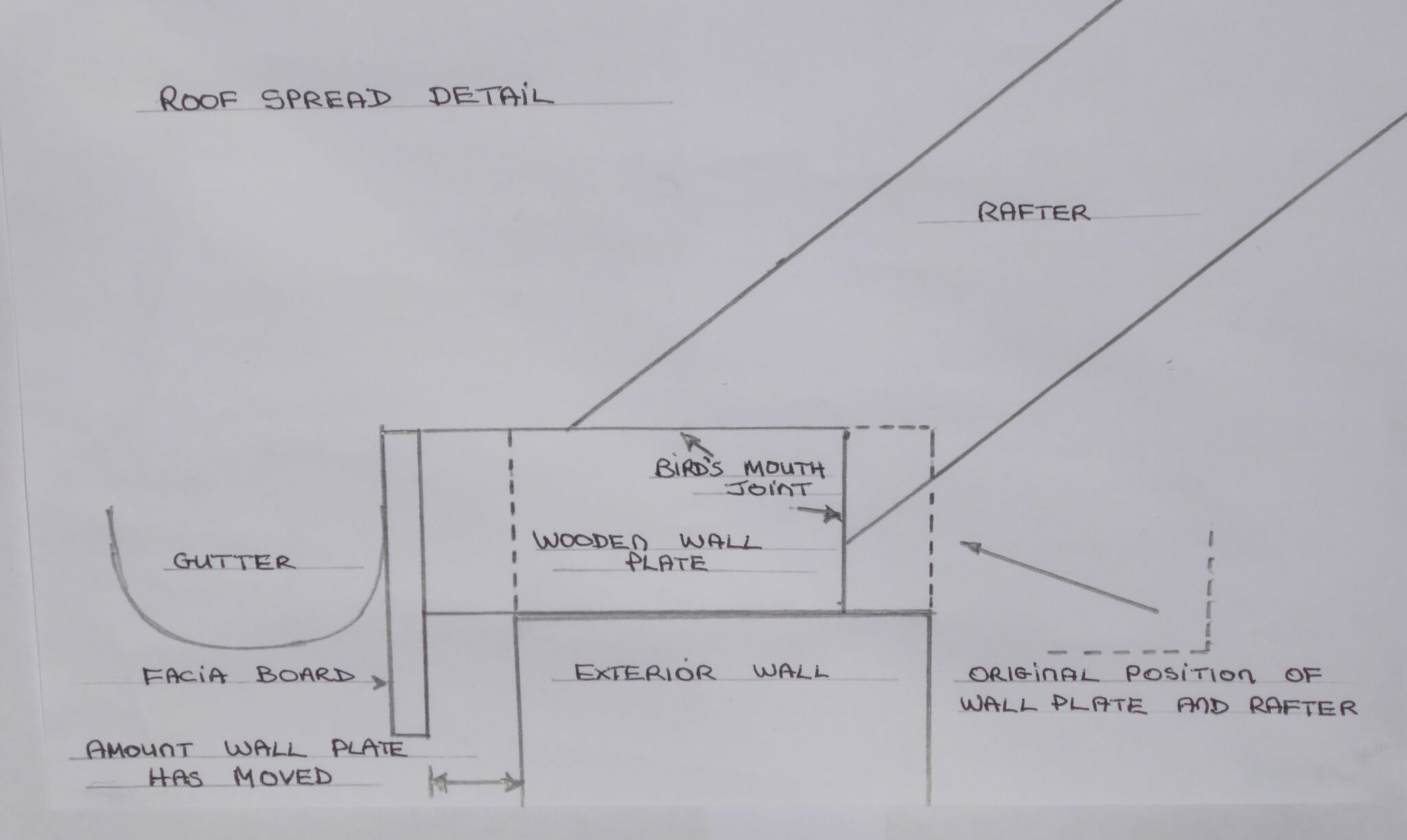
The rafters are fixed to the wall plate using a bird’s mouth joint. This method of securing the bottom of the rafter means they are unable to slip out of position.
Now, if a builder then overloads the rafters by installing heavy concrete tiles, very gradually over the decades either one of two things might happen:
a) The wall plate will be screwed securely into the top of the wall and the downward pressure on the rafters will push the top of the exterior wall outwards causing it to bow the brickwork. Bowed brickwork front or back is serious and will almost certainly involve the roof.
b) The wall plate will not be fixed to the wall and the downward pressure of the concrete on the rafters will slide it over the wall and in danger of eventually ending up in the street.
Now if, as is often the case, the fascia board holding the gutter is attached to the end of the stressed rafters, the guttering will move accordingly, hence the bow shaped alarm signal.
Another reliable thing to look for in regards to roof spread or roof sag is the line of the ridge. It should be horizontal. If it is badly dipping in the middle it is because the rafters have sagged or bowed, pulling the ridge down with them.
From my experience, particularly of terraced housing, the rafters never move much near the party walls but are affected mostly towards the centre, which is why warning signs are always bow shaped.
One final tip. Unscrupulous builders sometimes mask the dip in the ridge by packing the tiles in the middle with extra sand and cement. Hence the ridges near the walls are flat on the tiles and the ones in the middle have up to 40mm of mortar underneath.
Remember, unless it’s a Tudor timber framed building which will twist and sag safely to great aesthetic effect, avoid anything that is bowed. You will be doing yourself a favour.
Example of property with roof spread
Roof spread was detected recently in a property where the concrete tiles had pushed the front and back flanks down together with the top flat roof. Gaping cracks and gaps meant the structure needed a complete rebuild.
At the back, note the fascia and guttering had the tell-tale signs of bowing and being pushed away from the brickwork.
When the client advised me they would be moving in the next 5 years I agreed to stabalise the situation by adding purlins and “H” frame timbers in the loft. We then attended to the waterproofing of the roof itself.
As I explained to the owner, any future purchaser would be made aware by a surveyor of the measures we have had to take and almost certainly would recommend a rebuild of the roof to incorporate a loft.
The Roofing Crew
© 2015. The content on this website is owned by us and our licensors. Do not copy any content (including images) without our consent.
Contact
Call The Roofing Crew
07973 429 945
info@theroofingcrew.co.uk
